- Home
- Brian Lumley
The Burrowers Beneath
The Burrowers Beneath Read online
Table of Contents
Title Page
I - The Nethermost Caverns
II - Marvels Strange and Terrific
III - Cement Surroundings
i
ii
iii
iv
v
vi
IV - Cursed the Ground
V - Evil the Mind
VI - That Is Not Dead
VII - Not from His Charnel Clay
VIII - Peaslee of Miskatonic
IX - The Night Sea-Maid Went Down
X - The Third Visitor
XI - Horrors of Earth
XII - Familiarity Breeds
XIII - The Very Worm That Gnaws
XIV - Winds of Darkness
Copyright Page
I
The Nethermost Caverns
(From the Files of Titus Crow)
Blowne House
Leonard’s Walk Heath
London
18th May 196-
Ref: - 53/196-
G.K. Lapham & Co
Head Office, GKL Cuttings
117 Martin Fludd St.
Nottingham, Notts.
Dear Mr. Lapham,
Please alter my order as it stands to cover only the most outstanding cases, on which your continued cooperation would be appreciated as ever. This action not to be misconstrued as being all but a cancellation of my custom, on the contrary, but for the time being I would rather you concentrate your efforts on my behalf to full coverage of one special line. I require all cuttings, one copy of each, from all forty-three dailies normally covered, of current occurrences involving earthquakes, tremors, subsidences, and like phenomena (and backdated to cover the last three years where at all possible), to continue until further notice. Thank you for your prompt attention.
Yrs. faithfully, T. Crow
Blowne House 19th May
Ref: - 55/196-
Edgar Harvey, Esq.
Harvey, Johnson & Harvey, Solicitors
164-7 Mylor Rd.
Radcar, Yorks.
Dear Mr. Harvey,
I am given to understand that you were the literary agent of Paul Wendy-Smith, the young writer of tales of romantic and/or macabre fiction, and that following his mysterious disappearance in 1933 you became executor to the estate. I was only a very young man at that time, but I seem to remember that because of certain special circumstances publication of the writer’s last story (showing, I believe, strange connections with the disappearances of both the author and his uncle, the explorer-archaeologist Sir Amery Wendy-Smith) was held in abeyance. My query is simply this: has the work since seen publication, and if so where may I obtain a copy?
I am, sir, hopefully
expectant of an early
answer, Yrs. sincerely,
T. Crow
Harvey, Johnson & Harvey
Mylor Rd.
Radcar, Yorks.
22nd May
Blowne House
Dear Mr. Crow,
Regarding your inquiry (your reference -55/196- of 19th May), you are correct, I was the executor to the estate of Paul Wendy-Smith—and yes, there was a tale held in abeyance for a number of years until the Wendy-Smiths were both officially pronounced “missing or dead” in 1937. The story, despite being a very slight piece, has seen publication more recently in an excellently presented and major macabre collection. I enclose proofs of the story, and, should you require the book itself, the publisher’s card.
Hoping that this covers your inquiry to your complete satisfaction, I am, Sir,
Yours sincerely,
Edgar Harvey
Blowne House
25th May
Ref: -58/196-
Features Reporter
Coalville Recorder
77 Leatham St.
Coalville, Leics.
My dear Mr. Plant,
Having all my life been interested in seismological phenomena, I was profoundly interested in your article in the issue of the Recorder for 18th May. I know your coverage was as complete as any man-in-the-street could possibly wish, but wonder if perhaps you could help me in my own rather more specialized inquiry? Tremors of the type you described so well are particularly interesting to me, but there are further details for which, if it is at all possible you can supply them, I would be extremely grateful. Calculations I have made suggest (however inaccurately) that the Coalville shocks were of a linear rather than a general nature; that is, that they occurred on a line almost directly south to north and in that chronological order—the most southerly occurring first. This, at least, is my guess, and I would be grateful if you could corroborate, or (as no doubt the case will be) deny my suspicion; to which end I enclose a stamped, addressed envelope.
Sincerely and appreciatively
Yrs., I am, sir,
Titus Crow
Blowne House
25th May
Ref: -57/196-
Raymond Bentham, Esq.
3 Easton Crescent
Alston, Cumberland
My dear sir,
Having read a cutting from a copy of the Northern Daily Mail for 18th May, I would like to say how vastly interested I was in that article which contained certain parts of your report on the condition of the west sections of Harden Mine’s old workings, and feel it a great pity that Sir David Betteridge, scientific advisor to the Northeast Coal-Board, has chosen to look at your report in so unenlightened and frivolous a manner.
To me, while admittedly knowing little of yourself or your job, it would seem rather irresponsible on the part of so large and well-founded an industrial board to employ for twenty years an Inspector of Mines without, during that time, discovering that his “faculties are not all that they should be”!
Now, I am not a young man myself, indeed we are contemporaries, but I have complete faith in my faculties—and, since reading certain of the things in your report which I can (in a rather peculiar way) corroborate, I am sure that you were quite correct in the observations you made in the complex of the discontinued Harden workings. Just how I can be so sure must, unfortunately, remain my secret—like most men I am averse to derision, a point I am sure you will appreciate—but I hope to offer you at least some proof of my sincerity in writing this letter.
Thus, to reassure you beyond any doubt that I am not simply “pulling your leg,” or in any way trying to add my own sarcastic comment to what has already been made of your report, I return your attention to the following:
Other than mentioning briefly certain outlines which you say you found etched in the walls of those new and inexplicable tunnels which you discovered down there cut (or rather “burned,” as you had it) through the rock a mile below the surface, you seem reluctant to describe in detail the content or actual forms of those outlines. Might I suggest that this is because you did not wish to be further ridiculed, which you feared might well be the case should you actually describe the etchings? And might I further tell you what you saw on those unknown tunnel walls; that those oddly dimensioned designs depicted living creatures of sorts—like elongated octopuses or squids but without recognizable heads or eyes—tentacled worms in fact but of gigantic size?
Dare I lay my cards on the table yet more fully and mention the noises you say you heard down there in the depths of the Earth; sounds which were not in any way the normal stress noises of a pit, even given that the mine in question had not been worked for five years and was in poor repair? You said chanting, Mr. Bentham, but quickly retracted your statement when a certain reporter became unnecessarily facetious. Nonetheless, I take you at your original word: you said chanting, and I am sure you meant what you said! How do I know? Again, I am not at liberty to disclose my sources; however, I would be
obliged for your reaction to the following:
Ce’haiie ep-ngh fl’hur G’harne fhtagn,
Ce’haiie fhtagn ngh Shudde-M’ell.
Hai G’harne orr’e ep fl’hur,
Shudde-M’ell ican-icanicas fl’hur orr’e G’harne.
Restricted as I am at this time regarding further illuminating my interest in the case, or even explaining the origin of my knowledge of it, but still in the hope of an early answer and perhaps a more detailed account of what you encountered underground, I am, Sir,
Yrs. sincerely,
Titus Crow
Coalville Recorder
Coalville, Leics.
28th May
Blowne House
Dear Mr. Crow,
In answer to your -58/196-, of the 25th:
The tremors that shook Coalville, Leics., on the afternoon of the 17th, were, as you correctly deduced, of a linear nature. (And yes, they did occur south heading north; have in fact continued, or so I believe, farther up-country.) As you are no doubt aware, Coalville is central in an area of expanding mining operations, and doubtless the collapse of old diggings was responsible, in this area at least, for the peculiar shocks. They lasted from 4:30 until 8:00 P.M., but were not particularly severe—though, I am told, they had a very bad effect on certain of the inmates of the local Thornelee Sanatorium.
There were, too, other slight surface subsidences, not nearly so bad, almost a year ago. At about that time also, five miners were lost in the collapse of a very narrow and unproductive seam which they were working. The twin brother of one of these men was in a different part of the mine at the time, and much sensational publicity was given his subsequent condition. I did not cover his case, though it was done up pretty distastefully in a hack contemporary of the Recorder under the heading: “Siamese Mining Horror!” Apparently the living twin went stark staring mad at the very instant his brother and the other four men were killed!
You should be interested in a series of articles which I am at present planning for the Recorder, “A History of the Midland Pits,” to be published later this year, and I would be pleased to send you the various chapters as they appear if you so desire.
Yours Faithfully,
William Plant
Alston, Cumberland
28th May
Blowne House
Dear Mr. Crow,
I got your letter yesterday afternoon, and not being much of a writing man, I’m not sure how to answer it, or even if I can find the right words.
First off, let me say you are quite right about the pictures on the tunnel walls—and also about the chanting. How you could know about these things I can’t possibly imagine! So far as I know, I’m the only one to have been down that shaft since they closed the pit, and I’m damned if I can think of any other spot on or under the earth where you might have heard sounds like those I heard, or seen drawings the like of them on the tunnel walls. But you obviously have! Those crazy words you wrote down were just like what I heard … .
Of course, I should have gone down there with a mate, but my No. 2 was off sick at the time and I thought it was going to be just another routine job. Well, as you know, it wasn’t!
The reason they asked me to go down and check the old pit out was twofold—I’d worked the seams, all of them, as a youngster and knew my way about, and of course (to hell with what Betteridge says) I am an experienced inspector—but mainly someone had to do the job to see if the empty seams could be propped up or filled in. I imagine that the many subsidences and cave-ins round Ilden and Blackhill have been giving the Coal-Board a bit of a headache of late.
Anyhow, you asked for a more detailed account of what I came up against underground, and I’ll try to tell it as it happened. But can I take it that everything I say will be in confidence? See, I have a good pension coming from the Coal-Board in a few years’ time, and naturally they don’t much care for adverse stuff in the press, particularly stuff to worry local landowners and builders. People don’t buy property that’s not safe, or ground that’s liable to subsidence! And since I’ve already had one ticking off as it is, well, I don’t want to jeopardize my pension, that’s all … .
I think what really annoyed the bosses was when I went on about those tunnels I found down there—not old, timbered seams, mind you, but tunnels—round and pretty smoothly finished and certainly artificial. And not just one, as they said in the Mail, but half a dozen! A proper maze, it was. Yes, I said those tunnel walls were burned rather than cut, and so they were. At least, that’s how they looked, as though they’d somehow been coated on the inside with lava and then allowed to cool!
But there I go running ahead of myself. Better start at the beginning … .
I went down the main shaft at Harden, using the old emergency lift-cage which they hadn’t yet dismantled. There was a gang of lads at the top just in case the old machinery should go on the blink. I wasn’t a bit worried, you understand; it’s been my job for a long time now and I know all the dangers and what to look for.
I took a budgie down with me in a little cage. I could hang the cage up to the roof timbers while I looked about. There are some of the old-fashioned methods you still can’t beat, I reckon. The old-timers used canaries—I took a budgie. That was so I’d know if there was any firedamp down there (methane to you). A heavy gas knocks a bird out in a wink, which lets you know it’s time to get out! I wore protective gear and high boots in case of water—Hardens not all that far from the sea, and it’s one of the deepest pits in the country. Funny thing, but I expected water, yet as it happened I was quite wrong; it was dry as a bone down there. I had a modern lamp on my helmet with a good, powerful beam, and I carried a map of the galleries and seams—standard procedure but hardly necessary in my case.
Well, anyway, I got down the shaft all right and gave the old handset at the bottom a twirl to let the boys on top know that everything was well, and then I set out along the horizontal connecting-shaft to the west-side galleries and coal-seams. Now, you have to understand, Mr. Crow, that the main passages are often pretty big things. Some of them are almost as large as any single tube-tunnel in London. I mention this to show that I wasn’t shut in, like, or suffering from claustrophobia or anything like that, and it wasn’t as if I hadn’t been down a pit before—but there was, well, something!
It’s hard for me to explain on paper like this, but—oh, I don’t know—I had this feeling that—it was as if—well, did you ever play hide-and-seek as a child and go into a room where someone was hiding? You can’t see him, it’s dark, and he’s quiet as a mouse, but you know he’s in there all the same! That’s what it was like down there in that deserted mine. And yet it was truly deserted—at that time anyway … .
Well, I shook this feeling off and went on until I reached the west-side network. This is almost two horizontal miles from the main shaft. Along the way I had seen evidence of deterioration in the timbers, but not enough to explain away the subsidences on the surface. So far as I could see, there had been no actual cave-ins. The place did stink, though, like nothing I’d ever smelled before, but it wasn’t any sort of gas to affect the budgie or me. Just a very unpleasant smell. Right at the end of the connecting-shaft, at a spot almost directly under Blackhill, I came across the first of the new tunnels. It entered into the shaft from the side away from the sea, and frankly it stopped me dead! I mean, what would you have made of it?
It was a hole, horizontal and with hard, regular walls, but it was cut through solid rock and not coal! Now, I like to keep slap up-to-date on mining methods, but I was pretty sure right from the start that this tunnel wasn’t dug using any system of machinery I knew of. And yet it seemed I must have missed something somewhere. The thing wasn’t shown on my map, though, so in the end I told myself that some new machinery must have been tested down there before they’d closed the mine. I was damned annoyed, I’ll tell you—nobody had told me to expect this!
The mouth of the tunnel was about eight feet in diameter, and altho
ugh the roof wasn’t propped up or timbered in any way the bore looked safe-as-houses, solid somehow. I decided to go on down it to see how far it went. It was all of half a mile long, that shaft, Mr. Crow; none of it timbered, straight as a die, and the neatest bit of tunneling work I’ve seen underground in twenty-five years. Every two hundred yards or so similar tunnels would come in from the sides at right angles, and at three of these junctions there had been heavy falls of rock. This warned me to be careful. Obviously these holes weren’t as solid as they looked!
I don’t know where the thought came from, but suddenly I found myself thinking of giant moles! I once saw one of these sensational film things about just such animals. Anyway, I’d no sooner had this thought than I came to a spot where yet another tunnel joined the main one—but this one came down at an angle from above!
There was a hole opening into the ceiling, with the edges rounded off and smoothed in some way I don’t understand, as if by heat like I said before. Well, I went dead slow from then on, but soon I came out of the tunnel into a big cave. At least, I took it to be a cave, but when I looked closer at the walls I saw that it wasn’t! It was simply a junction of a dozen or so of the tunnels. Pillars like stalagmites held up the ceiling. This was where I saw the carvings, those pictures of octopus-things etched in the walls, and I don’t think I need add how much that put the wind up me!
I didn’t hang about there much longer (apart from anything else the stench was terrible), but long enough to check that the place was all of fifty feet across and that the walls were coated or smoothed over with that same sort of lava-stuff. The floor was flat enough but crumbly, almost earthy, and right in the middle of the place I found four great cave-pearls. At least, I think they’re cave-pearls. They’re about four inches across, these things, very hard, heavy, and glossy. Don’t ask my how they got down there, I don’t know, and I can’t see how they might have been formed naturally, like other cave-pearls I remember seeing when I was a kid. Anyway, I put them into a bag I carried and then went back the way I’d come to the terminal of the west-side workings. By then I’d been down there about an hour and a half.

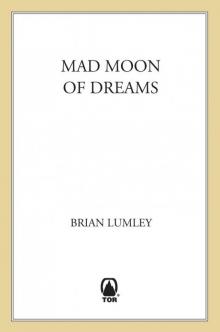 Mad Moon of Dreams
Mad Moon of Dreams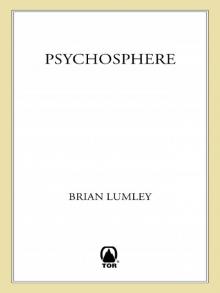 Psychosphere
Psychosphere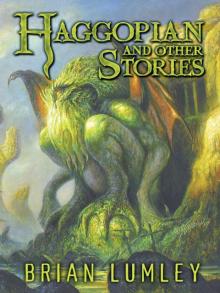 Haggopian and Other Stories
Haggopian and Other Stories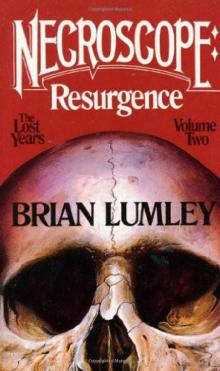 Resurgence_The Lost Years_Volume Two
Resurgence_The Lost Years_Volume Two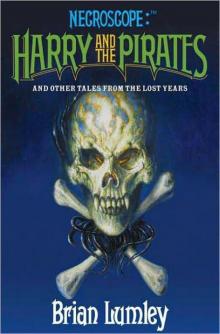 Necroscope: Harry and the Pirates: And Other Tales From the Lost Years
Necroscope: Harry and the Pirates: And Other Tales From the Lost Years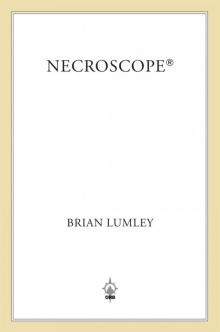 Necroscope®
Necroscope® Dreamlands 5: Questers for Kuranes: Two Tales of Hero and Eldin
Dreamlands 5: Questers for Kuranes: Two Tales of Hero and Eldin The Taint and Other Novellas: Best Mythos Tales Volume 1
The Taint and Other Novellas: Best Mythos Tales Volume 1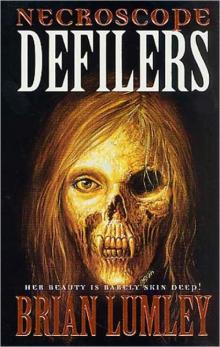 Necroscope: Defilers
Necroscope: Defilers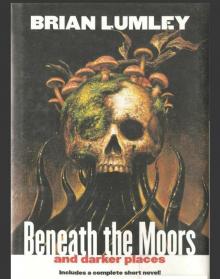 Beneath the Moors and Darker Places
Beneath the Moors and Darker Places The Fly-By-Nights
The Fly-By-Nights Khai of Khem
Khai of Khem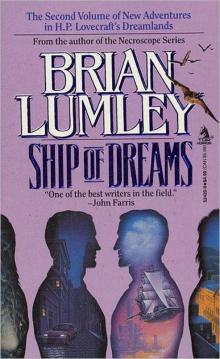 Ship of Dreams
Ship of Dreams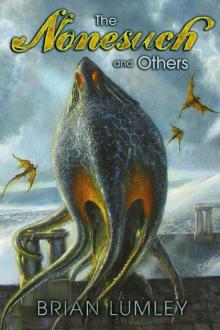 The Nonesuch and Others
The Nonesuch and Others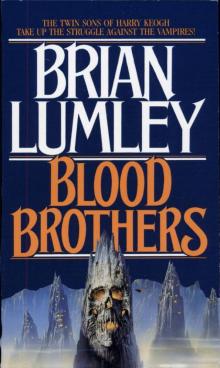 Blood Brothers
Blood Brothers Necroscope
Necroscope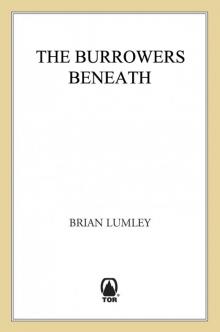 The Burrowers Beneath
The Burrowers Beneath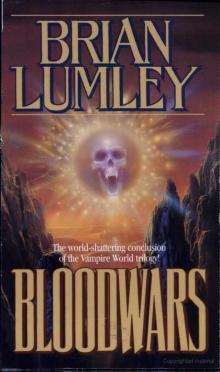 Bloodwars
Bloodwars No Sharks in the Med and Other Stories
No Sharks in the Med and Other Stories The House of Doors - 01
The House of Doors - 01 Screaming Science Fiction
Screaming Science Fiction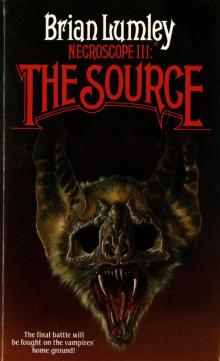 Necroscope III: The Source
Necroscope III: The Source Vampire World I: Blood Brothers
Vampire World I: Blood Brothers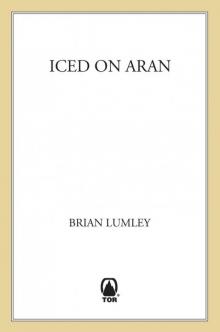 Iced on Aran
Iced on Aran Necroscope: Invaders
Necroscope: Invaders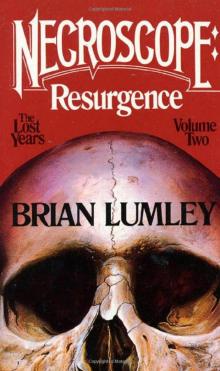 Necroscope: The Lost Years
Necroscope: The Lost Years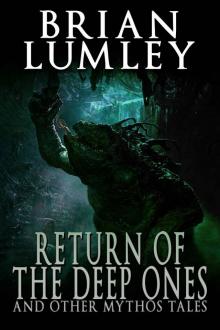 Return of the Deep Ones: And Other Mythos Tales
Return of the Deep Ones: And Other Mythos Tales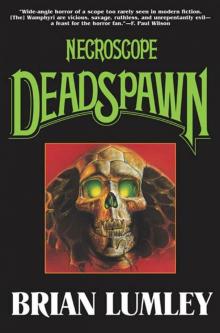 Necroscope V: Deadspawn
Necroscope V: Deadspawn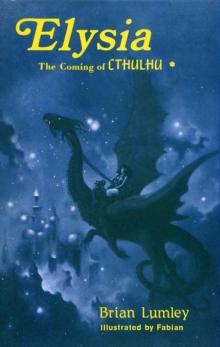 Titus Crow, Volume 3: In the Moons of Borea, Elysia
Titus Crow, Volume 3: In the Moons of Borea, Elysia Hero of Dreams
Hero of Dreams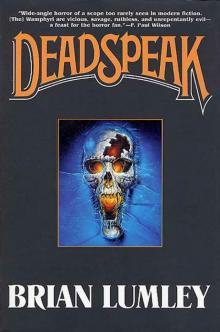 Necroscope IV: Deadspeak
Necroscope IV: Deadspeak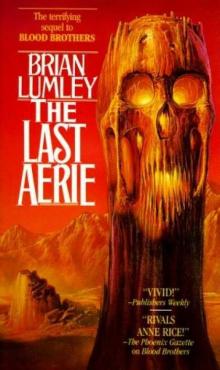 The Last Aerie
The Last Aerie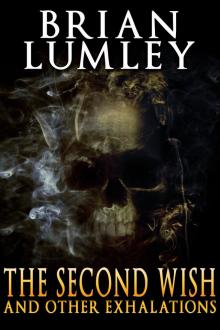 The Second Wish and Other Exhalations
The Second Wish and Other Exhalations Necroscope: The Touch
Necroscope: The Touch Necroscope: The Plague-Bearer
Necroscope: The Plague-Bearer Necroscope: Avengers
Necroscope: Avengers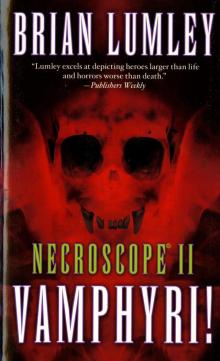 Necroscope II: Wamphyri
Necroscope II: Wamphyri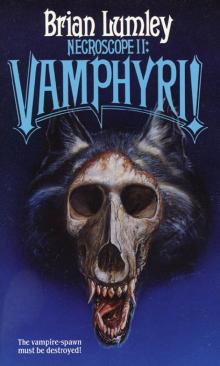 Necroscope II_Vamphyri!
Necroscope II_Vamphyri! A Coven of Vampires
A Coven of Vampires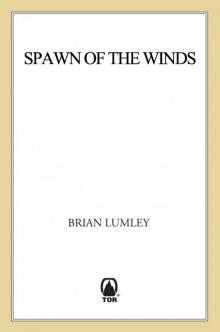 Spawn of the Winds
Spawn of the Winds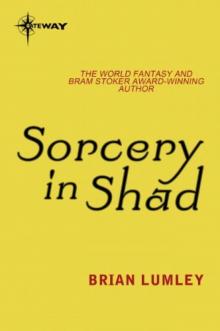 Sorcery in Shad
Sorcery in Shad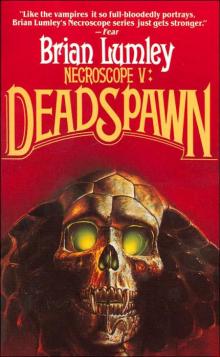 Deadspawn
Deadspawn Necroscope V: Deadspawn n-5
Necroscope V: Deadspawn n-5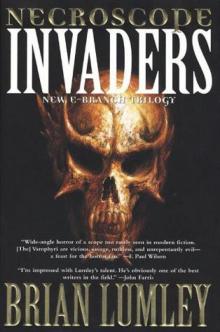 Necroscope: Invaders e-1
Necroscope: Invaders e-1![Beneath the Moors and Darker Places [SSC] Read online](http://i1.bookreadfree.com/i/03/20/beneath_the_moors_and_darker_places_ssc_preview.jpg) Beneath the Moors and Darker Places [SSC]
Beneath the Moors and Darker Places [SSC]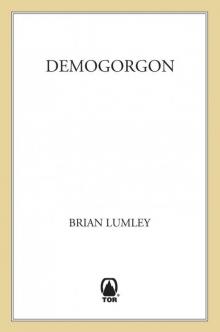 Demogorgon
Demogorgon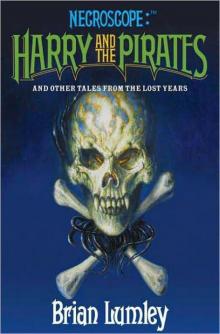 Harry and the Pirates_and Other Tales from the Lost Years
Harry and the Pirates_and Other Tales from the Lost Years Necroscope IV: Deadspeak n-4
Necroscope IV: Deadspeak n-4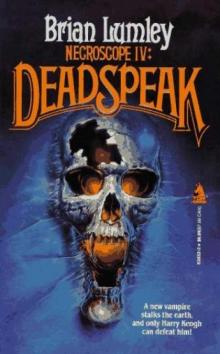 Deadspeak
Deadspeak The Taint and Other Novellas
The Taint and Other Novellas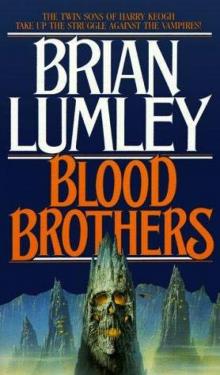 Blood Brothers vw-1
Blood Brothers vw-1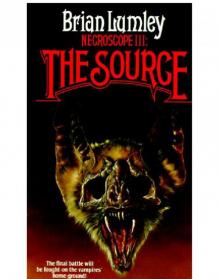 The Source n-3
The Source n-3 In the Moons of Borea
In the Moons of Borea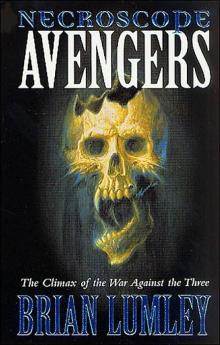 Avengers
Avengers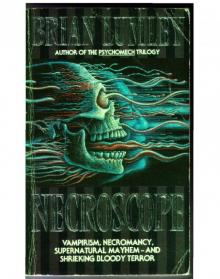 Necroscope n-1
Necroscope n-1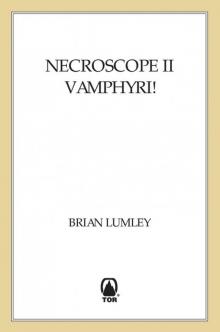 Vamphyri!
Vamphyri!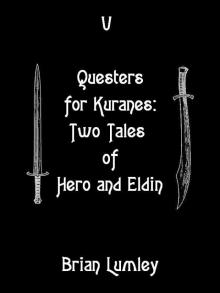 Questers for Kuranes: Two Tales of Hero and Eldin
Questers for Kuranes: Two Tales of Hero and Eldin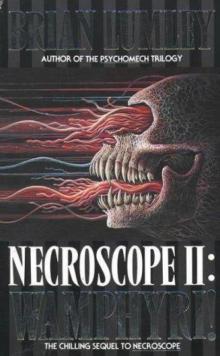 Necroscope II: Wamphyri! n-2
Necroscope II: Wamphyri! n-2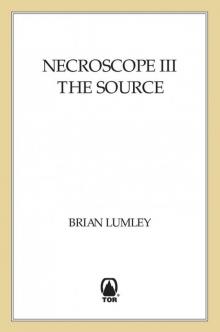 The Source
The Source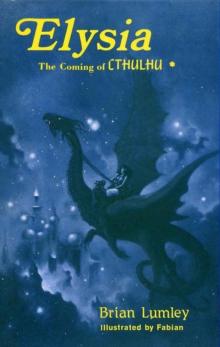 Elysia
Elysia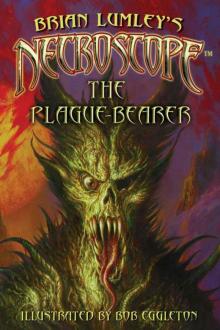 The Plague-Bearer
The Plague-Bearer The Touch
The Touch Invaders
Invaders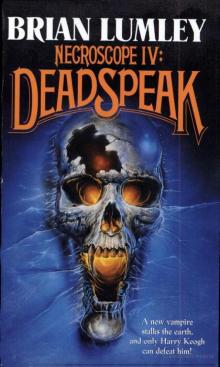 Necroscope 4: Deadspeak
Necroscope 4: Deadspeak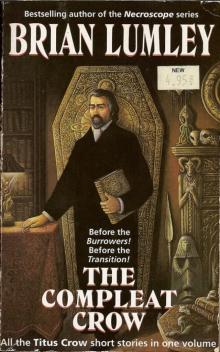 Compleat Crow
Compleat Crow The Mobius Murders
The Mobius Murders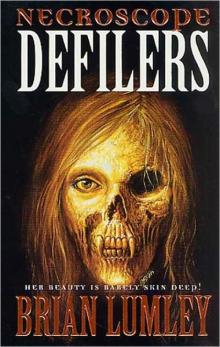 Defilers
Defilers